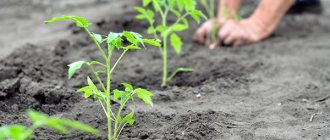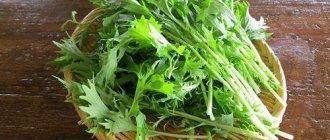- "Krautkaiser F1"
- "Guarantor F1"
Despite the year-round presence of white cabbage on store shelves and its affordable price, many gardeners include this vegetable crop as a must-have and continue to grow it on their own plots. When choosing cabbage varieties, it is important to take into account their zoning, ripening time and purpose of the heads of cabbage.
Among the varieties of white cabbage, you can choose options for every taste
The list of cabbage varieties and hybrids is extremely extensive. It presents:
- early ripening, having a short consumption period;
- mid-season, suitable for all methods of processing and short-term storage;
- late, with high shelf life and transportability, ensuring the consumption of fresh vegetables from the second half of autumn to spring.
History of selection of SB-3 F1
The SB-3 F1 variety was obtained back in 1984 at the Moscow Breeding Station named after. Timiryazev. By experimenting with different varieties, breeders tried to obtain a variety with high yield, favorable ripening and the ability to grow in any climatic zone without significantly reducing the volume of the harvest. Officially, the new variety was registered in the State Register in 1990.
Did you know? At least 100 different types of cabbage are grown around the world, but the most common are white, red and savoy.
Description and characteristics
White cabbage SB-3 F1 is a member of the cruciferous family. She is a two year old. In the first year of growth, a stem is formed on which the cabbage head is formed, and in the second year a peduncle appears on which the seeds ripen. SB-3 F1 is suitable for cultivation in any region - this is one of the main features of the variety.
Its excellent appearance and commercial qualities make it suitable for cultivation on a large industrial scale. The variety is considered universal and valued in cooking. It stores well, can be used fresh and is suitable for all types of preparations. Cabbage acquired high taste due to its high sugar content. Its taste is rated 4.5 out of 5.
Main characteristics of cabbage SB-3 F1:
- leaf rosette: large, raised, diameter - up to 90 cm, height - up to 60 cm;
- head: round, dense, light green;
- leaves: medium size, round, with a small number of veins, pale green with an additional dark gray tint, no wax coating;
- weight: 3–4.4 kg;
- diameter: average - 17–24 cm;
- texture: dense, crispy;
- stalk: small, short;
- taste: sweetish;
- tolerance/resistance: the variety is resistant to blackleg, formosa;
- ripening period: 130–140 days;
- taste qualities: high;
- yield: 970–1018 c/ha.
Can be grown by seedlings and without seedlings. The variety is characterized by excellent keeping quality and the ability to be stored fresh for a long time.
Did you know? A few years ago, a monument appeared in Kyiv called “You will have a child.” The monument is a cabbage made of bronze, on top of which lies a baby. According to the authors, the monument should help couples who come to it to give birth to a healthy child.
Appearance of cabbage
Traditional cabbage varieties are increasingly being replaced by new hybrid varieties. SB-3 F1 is also a first generation hybrid variety. Hybrids are more productive and resistant to fungal and viral diseases. In appearance, they do not differ from ordinary varieties: there is a leaf rosette with a head of cabbage on a stalk.
Ripening time and yield
The described variety can be grown using seedlings or planted directly in an open garden bed. The timing of planting will affect the timing of harvest. For cabbage with a ripening period of 130–140 days, it would be better to plan planting using seedlings. To do this, the seeds are planted in cups 3-4 weeks before planting in the ground.
Learn how to plant and grow cabbage correctly.
The optimal time for sowing seedlings is from April 10. Then the seedlings are planted in the garden at the end of May. The yield declared by the originator is one of the highest: 970–1018 c/ha. The description of this variety in the State Register indicates that the maximum yield was 1260 c/ha. This indicator is usually influenced by watering and fertility of the site.
Resistance to cold and disease
The variety can grow in any climatic conditions, including Siberia, so when planning planting, take into account not frost resistance, but the length of the growing season. Thus, in regions with short summers, varieties that require more than 4 months to develop are preferably grown in greenhouses. Cabbage SB-3 F1 tolerates drought and other adverse weather conditions well. Among the diseases, the variety was noted to be resistant to blackleg and formosa. The heads of cabbage are resistant to cracking.
Planting seeds and seedlings
Atria cabbage (the description of the variety and photos help to make the right choice of crop for specific conditions) is grown by seedlings and without seedlings. The first one is the most popular in the middle zone. In more southern areas, they prefer to sow seeds in the ground at the end of March or beginning of April.
To be sure that the seeds will germinate, they are first tested for germination. If after immersion in water for 10 minutes. some of them will fall down, which means they can be sown. All floating seeds can be thrown away: they are empty and will not sprout.
Germination is carried out by soaking the seeds on gauze. To prevent it from drying out, you need to moisten the fabric several times a day.
For sowing it is better to use the following mixture:
- turf;
- peat;
- sand;
- ordinary soil.
Before sowing the seeds, the soil is calcined in the oven or spilled with a solution of potassium permanganate. In the latter case, you need to spill it generously, using a weak pink solution.
If in the southern regions cabbage seeds are immediately planted in the garden bed, then the rest are first grown as seedlings at home. After all, there is a threat of frost until the end of May or beginning of June. It is important to properly prepare the area for planting.
The following requirements apply to it:
| Requirement | Description |
| Good lighting of the chosen location | In the shade, heads of cabbage set worse. All the energy goes into the formation of leaves that trap chlorophyll. |
| Compliance with crop rotation rules | Representatives of the cruciferous family (radish, radish, cabbage) should not be grown on the plot for at least 3 years. The best option would be to use a plot of the garden where legumes, tomatoes, cucumbers, and potatoes grew the previous year. |
| Non-acidified soil | Dense and acidic soils are not suitable for planting; they cause diseases. Such areas are pre-treated with dolomite flour. |
To protect plants from damage by pathogenic bacteria, planting material undergoes special treatment.
For this:
- Seed selection is underway.
- The seeds are placed in a solution of the protective agent Fitosporin. Contact time – 30 min.
- The seeds are kept in hot (up to +50°C) water for about an hour.
- Before sowing, the seeds are cooled.
It is better to plant seeds in separate containers filled with nutrient soil.
Experts recommend adding a little ash to all components (turf, peat, sand, soil). In order for the seeds to germinate quickly, the room temperature must be 20-23°C.
Planting in open ground should be based on the natural conditions in the region. Hardening is carried out first. At first, the containers are taken out for 15-20 minutes, then this time is increased to several hours. After a week you can leave it on for the whole day. This will reduce the possibility of stress when planting in open ground.
Advantages and disadvantages of the variety
- Advantages of the SB-3 F1 variety:
- very high yield;
- excellent taste;
- good adaptation to all types of climate;
- frost resistance;
- drought resistance;
- good keeping quality;
- excellent presentation of heads of cabbage, which does not deteriorate during transportation;
- amicable maturation;
- crack resistance.
- Among the shortcomings are noted:
- long ripening period, despite the fact that the variety is indicated as mid-season;
- insufficient protection from diseases, but this is inherent in all varieties of old selection.
The best varieties of white cabbage
There are many types of white cabbage. They differ in the content of nutrients, ripening time, size of heads of cabbage, and shelf life. However, among them there are the most popular species, which is confirmed by numerous reviews from gardeners. These types successfully combine all the necessary characteristics of a vegetable. Moreover, these include not only time-tested species, but also new hybrid forms of culture.
Here are the best of them, according to gardeners.
June
An early species, with a growing season of 90-110 days. The leaf rosette is raised, 40-50 cm high. The heads of cabbage are flat-round, of medium density, weighing 0.9-2.kg. The fruits are light green on top. Juneweed is susceptible to clubroot. The harvest can be stored for 3 months.
Aggressor
A hybrid late type of cabbage obtained by Dutch breeders. The duration of its growing season is 115-120 days. The plant has great growth vigor. Aggressor is resistant to cracking. The size of the heads varies from 3 to 5 kg. The fruits are gray-green on top and have a dense consistency inside.
Slava 1305
An ancient Russian variety, medium ripening. Recommended for cultivation in any region of the country. The duration of the period from germination to harvest is 110-130 days. Slava 1305 is prone to cracking. The heads of cabbage are flat-round, dense, yellowish-white when cut, weighing 3-5 kg.
Amager 611
A Russian variety that has proven itself well over many years. Belongs to the category of late species with a growing season of 117-148 days. Suitable for early spring planting, as it has increased cold resistance. The heads of cabbage are dense, round, weighing 2.5-4 kg. Tolerates mechanized collection and transportation well.
Moscow late
The variety was included in the State Register in 1943, but has not yet lost its relevance. Belongs to the category of late species with a long growing season from 115 to 140 days. The heads of cabbage are dense, juicy, round, weighing 6-8 kg. The harvest retains its consumer properties for six months.
Megaton
A hybrid form of medium-late ripening culture from Dutch breeders. The duration of the period from the emergence of seedlings to the technical maturity of the fruit is 136-168 days. Megaton is recommended for cultivation in all regions of the country. Forms dense, juicy, smooth, rounded heads of cabbage weighing 3-4 kg, but individual specimens can reach 10-15 kg.
Rinda
Dutch medium-ripening hybrid type of white cabbage. Suitable for cultivation in the central regions of the country. The growing season of Rinda is 120-130 days. The fruits are moderately dense, juicy, have excellent presentation and taste. The shelf life of the crop is 2-4 months.
Kolobok
Late-ripening cabbage hybrid from Russian breeders. Suitable for commercial and private cultivation. The duration of the growing season is 150-165 days. Kolobok is universally used; its fruits are very dense, round, weighing 3-4.5 kg. When storing heads of cabbage for six months, the yield of marketable products is 73-75%. Kolobok is resistant to common crop diseases.
Present
A highly productive mid-late type of white cabbage with dense, round heads of medium size. The weight of the fruit is 2.5-4 kg, the yield of the species reaches 10 kg per 1 sq. m. The gift is undemanding in terms of soil nutrition and is resistant to frost and cracking.
Snow White
Late variety, universal use. Produces medium-sized fruits, 16-17 cm in diameter, moderately dense, juicy. The heads of cabbage are light green on top with a bluish tint, shiny, and inside are perfectly white, which is why the species got its name. Harvest shelf life is 6-8 months. Snow White perfectly withstands frosts down to -10 degrees without loss of commercial qualities.
Hope
Hybrid of white cabbage of medium ripening from Russian breeders. Suitable for cultivation in the central and northern regions of the country. The duration of the growing season from the emergence of seedlings to the technical maturity of the fruit is 115-120 days. Productivity per 1 sq. m reaches 12-14 kg. It is resistant to drought, cold, and diseases.
Rules for growing the variety
To obtain a high yield and high-quality marketable fruits, you need to grow good seedlings, and then provide the plants with optimal conditions for growth and development. However, you will need to carefully prepare the area for growing cabbage. Pre-planting preparation involves preparing seeds, soil, and containers for growing.
Important! For more northern regions, the date of planting cabbage seeds in open soil is shifted by 1
–
2 weeks and falls at the beginning of May.
Seedlings begin to be prepared in April in order to plant the plants in the ground in May. The growing period for seedlings is 30–35 days. During this time, 3–5 true leaves should form on the plants. The optimal time for planting seeds in unprotected soil without first growing seedlings is April 20–25. This method is only suitable for southern regions with warm climates.
The seedling method allows you to speed up the harvest
Preparing seeds for sowing
Basic actions with seeds:
- calibration;
- disinfection;
- germination.
Sizing is the process of selecting large, viable seeds. To do this, they are soaked in a solution of ordinary salt (3%) for 5 minutes. Empty seeds will float - you can throw them away as they will not sprout. The rest of the seeds can be planted all or larger ones can be selected. This greatly affects the size of future plants. The larger the seed, the higher its development potential.
To protect the future harvest from pathogenic microorganisms, seeds are disinfected in hot water (+50°C). The same effect is achieved by soaking in a slightly pink solution of potassium permanganate for 20–30 minutes. For germination, the seeds are placed on a saucer and covered with a damp cloth. The room temperature should be normal - about +20°C. After 3 days, the seeds should hatch. If less than half have sprouted, wait a couple more days and you can plant them in the ground.
After soaking, tails are pecked from the seeds. To plant the seeds, prepare a container. These can be wooden boxes, plastic or paper cups. The best containers are peat cups and peat tablets. A peat cup for growing seedlings is filled with soil mixture, after which the cabbage is planted in the garden without removing it from the container.
Did you know? The Roman Emperor Diocletian is famous not only for the fact that he gave up power in order to grow cabbage on his estate, but also for the fact that he developed several new varieties, which he was very proud of.
In addition, peat serves as an additional fertilizer. Peat tablets are peat packed in a mesh. It is moistened, the seed is planted and placed in a container for germination. Such seedlings immediately grow in a nutrient medium, and when planted they are not subject to deformation, since they are planted together with the medium in which they grew.
Video: sowing cabbage seeds for seedlings
Further care of seedlings
After sowing the seeds, the temperature for them is set at +18...+20°C. Seedling sprouts will appear 4–5 days after planting. After this, the temperature is reduced to +7…+9°С. It is imperative to monitor the condition of the soil so that it does not dry out. It is advisable to grow seedlings with additional lighting. Under normal lighting, seedlings will stretch towards the light source. To ensure that they grow evenly, containers with seedlings must be illuminated with fluorescent or LED lamps.
Fertilizing is carried out when 2 leaves are formed on each plant. Feeding composition: 1 tbsp. l. urea, 1 tbsp. l. potassium sulfate, diluted in 10 liters of warm water. Fertilizer is applied in the form of root fertilizer. The second fertilizing can be applied directly a few days before planting the seedlings in the ground. Plants grown in peat tablets do not need to be fed. Before planting in a permanent place, be sure to water all plants abundantly.
Did you know? Folk tales of Rus' explained the appearance of children in cabbage by the fact that a hare brings them there
—
symbol of fertility. And he chose cabbage because its wide leaves look like diapers.
Preparing the site and soil
Site preparation begins in the fall. You need to choose an area where legumes or root vegetables grew in front of the cabbage. The same plants should not be planted in the same area for several years, as pests and pathogens accumulate in the soil, which can infect the plants and reduce yields. The area should be well lit and drained. Cabbage can grow on any soil, but loam is preferred.
Autumn digging of the soil is combined with weed removal, pest control and the addition of lime for deacidification if the acidity level is above 6–6.5 pH. If the plants in the selected area suffered from fungal diseases, then the soil is disinfected with a hot solution of copper sulfate (1 tablespoon per 10 liters of water).
Some gardeners add humus or manure to the plot in the fall. But along with the melting of the snow, the nutrients of such fertilizers will go into the deeper layers of the soil, from where the cabbage cannot “get” them, so it is advisable to apply humus in the spring at the rate of 5–8 kg/1 m². If you apply fertilizers of inorganic origin, these could be:
- urea - 1 tbsp. l.;
- superphosphate - 1 tbsp. l.;
- wood ash - 1 tbsp.
The composition is diluted in 10 liters of hot water (+50°C).
Did you know? In the folk sowing calendar, the recommended date for planting seedlings is
—
May 18. This is the day of Irina the seedbed.
Transplanting seedlings into open ground
When the time comes to plant seedlings in the ground, they should be quite strong:
- approximate stem height - about 15 cm;
- the number of true leaves is 3–5.
Plan to transplant on a dry day when the outside air temperature is not lower than +10°C. According to the timing of planting in open ground, this is the last ten days of May. If the seedlings were grown in plastic containers, then planting is carried out using the transshipment method. Plants that grew in peat pots or tablets are planted together with the container.
To ensure that the process of planting in the ground is painless, the seedlings are stopped watering several days before the planned planting date. And 1-1.5 hours before planting, it is spilled with water so that the earthen ball becomes not just damp, but wet. Then it will not disintegrate during transplantation, and the plants will hardly suffer. The holes are prepared a little larger than the root system of the seedlings. Planting depth - to the bottom leaves. It is necessary that the distance between individual plants be at least 40 cm. The distance between rows is 50–55 cm. Seedlings must be planted in the absence of sun.
Features of planting and growing Atria
The hybrid variety in question can be cultivated either by direct sowing of seeds in the ground or by seedlings.
Growing seedlings
To grow healthy and strong seedlings, you need to take care of preparing the soil and seed material. The optimal time for planting Atria cabbage for seedlings is the beginning of April. Taking into account the ripening time and growing region, more specific dates are selected. Before sowing, the seeds must be hardened, tested for germination and germinated.
To speed up the emergence of seedlings, cabbage seeds are soaked, wrapped in a damp cloth and placed in a warm place.
To grow seedlings, you can use purchased soil or a self-prepared soil mixture. In the first case, there will be fewer worries, and in the second you will know exactly what the substrate consists of. To prepare the soil mixture you will need the following components:
- turf land;
- peat;
- calcined river sand.
To sow cabbage for seedlings, use a soil mixture of peat, turf soil and river sand.
It is not recommended to take soil from the garden, but in extreme cases you can use it after spilling it with a strong solution of manganese.
Prepared seeds are sown in planting containers to a depth of 1 cm, watered and placed in a warm place.
Cabbage seeds are sown at intervals of 1 cm, then sprinkled with a layer of soil and lightly compacted
Otherwise, the agricultural technology of Atria cabbage is similar to the cultivation of other varieties of this crop.
Video: sowing cabbage for seedlings
Caring for seedlings as they develop comes down to periodic feeding and watering. Seed producers recommend picking in the cotyledon phase. 2 weeks before planting the seedlings on the site, they are hardened off.
In order for cabbage seedlings to adapt to external conditions, they begin to take them out into the open air 2 weeks before planting.
Atria seedlings are planted in a permanent place 30–55 days after emergence. The optimal dates are May 10–20. At this time, the danger of return frosts should have passed (taking into account the growing region), and the soil will warm up to the desired value (+10–15˚С). The area for cultivation should be well lit and have fertile soil. Seedlings are planted according to a 40*60 cm pattern, planting density is 2.5–3 plants per 1 m2. It is advisable to replant seedlings in cloudy weather or in the late afternoon. Holes are made for plants in order to deepen them to the lower true leaves. In order for the cabbage to take root faster, during the first five days it is sprayed with water several times a day. In addition, to prevent sunburn, the plants need to be shaded for the first 2 days.
Seedlings are planted to a depth of 8–10 cm, watered, and sprinkled with earth on top to avoid the formation of a soil crust.
Atria, after planting seedlings, needs watering and fertilizing with nitrogen-containing fertilizers, which are most important during the period of head formation. Watering should be limited during the filling of the head of cabbage. After irrigation, loosening and hilling should be carried out.
Video: how to feed cabbage
Fertilizers should be applied with preliminary watering to avoid burns to the root system of plants. Fertilizing is carried out in cloudy weather.
Sowing and care in open ground
In the southern regions, cabbage is sown directly into the ground, but the beds are covered with film so that the seeds germinate faster and the seedlings feel as comfortable as possible. With direct sowing, Atria is planted in May. The area should be well lit by the sun during the day. Otherwise, instead of tying heads, you will only get leaves. The soil on the site must be fertile and breathable. If the land is poor, then 3–4 buckets of humus are added per 1 m². Atria is positioned as a high-yielding hybrid, but in order to achieve high performance, you need to fertilize the soil well and follow the agricultural practices for cultivating this variety. In addition, attention is paid to the acidity of the soil, since any cabbage does not tolerate acidic soils.
To protect crops from return frosts, install a frame and stretch the film
The most suitable soils for cultivating cabbage are soils with an acidity close to neutral, i.e. the pH level should be 6.5–7. This indicator can be determined using a special device or indicator strips.
Recent Entries
Lilac perennials that are beautiful, compact and do not crowd out other plants Why when buying seedlings you should not take the sellers’ word for it and how to determine the age of the plant using 3 signs Tomato seedlings have turned purple or whitish: why the color has changed and how to save the plants
If the acidity is increased, they resort to liming, for which 500 g of lime are added per 1 m² of land for digging.
To reduce the acidity of the soil, you will need to add lime before digging.
When choosing the variety in question, you need to understand that any mistake will leave you without a harvest. If for one reason or another it is not possible to adhere to the rules of agricultural technology, then it is better to abandon this hybrid in favor of another variety with fewer requirements. Atria is very moisture-loving, so the soil should never be allowed to dry out. Dry soil in the root zone is reflected in the form of a decrease in yield. The head of cabbage forms late, but the leaf apparatus grows quite intensively during the summer, which allows the hybrid to do this quickly. In just 1–1.5 months of autumn, the head of cabbage will be ready for harvesting. Atria cabbage is resistant to cracking, which allows it to be cultivated quite successfully even in soils with high humidity.
Video: sowing cabbage in open ground
Basic rules for caring for cabbage
Cabbage grows easily and produces a nutrient-rich crop. But for this you must provide the plants with proper care. This promotes good plant development and a rich harvest. After planting, cabbage will need:
- regular watering;
- periodic feeding;
- loosening;
- hilling;
- pest control measures.
Important! A glass of raw cabbage juice, drunk once a day, will relieve you of migraines for a long time.
Intensity of watering and fertilizing
White cabbage requires regular watering. If the seedlings are just planted in the ground, then water them 3-4 times a week. The volume of water is up to 2 liters for one plant. After a month, watering is reduced to once a week. Water volume - 10–12 l/1 m².
As for watering methods, there are several of them:
- along furrows, but in this case it is difficult to control the uniformity of watering;
- sprinkling (using sprinklers) - in this case, water gets on the leaves, which contributes to the development of fungal infections;
- drip irrigation - it is the most rational because it allows you to use water economically and supply it directly to the roots.
You need to feed cabbage 3-4 times per season. The best fertilizer option is a balanced composition of nitrogen, phosphorus and potassium in a ratio of 10:10:10. For fertilizing, complex fertilizers are used, or you can create fertilizing from several types at once:
- Ammonium nitrate (10 g/10 L of water) is the best inorganic source of nitrogen. It contains about 40%. Nitrogen is needed for intensive development of the leaf part of the plant. The norm is 40–45 g/1 m².
- Superphosphate is a source of phosphorus, which is needed for the development of the root system and flowering. Its application rate is 40 g/1 m².
- Potassium chloride is a source of potassium, which is needed to activate metabolic processes in plant cells. Application rate: 30–40 g/1 m².
Video: feeding cabbage
Loosening and weeding
Loosening is necessary for the plant in order to weaken the soil and provide an opportunity for the development of roots. It is carried out a day after watering or precipitation. Combined with weed removal. The recommended loosening depth is 7 cm.
Cabbage is often planted using spunbond or agrofibre as mulch. The bed is covered with film, cuts are made in it and cabbage is planted in them. This method of designing a bed prevents the growth of weeds, reduces the number of soil pests due to intense heating of the soil, prevents new pests from entering the soil, and also helps retain moisture after watering.
Landing
Cultivation is carried out through seedlings and ordinary equipment (sowing seeds directly into the beds).
Planting is carried out in a disinfected soil mixture from the 3rd decade of March and throughout April. Focus on the weather conditions of the climate zone. Seeds are sown in moist soil and buried 1-2 cm.
Soil for planting is purchased from a gardening company; it is possible to compose it yourself from components such as turf soil, peat, compost, and fine-grained sand.
If desired, ash, vermiculite, and rotted sawdust are added to the mixture. How to care for seedlings:
- maintaining a temperature of 10-16 degrees, humidity 70%;
- feeding 2-3 times (ammonium nitrate, Ecosila);
- diving with 1-2 leaves.
How to feed seedlings:
| Deadlines | Composition for 10 l |
| 10 days after the growth of a pair of leaves | 25 g saltpeter 10 g potassium chloride 40 g superphosphate |
| In 2 weeks | 35 g saltpeter |
| A week before planting | 25 g ammonium nitrate 40 g phosphorus-potassium additive |
Pest and disease control
If you grow cabbage correctly, observing the requirements for the site, microclimate, frequency of watering and fertilizing, then you can count on successfully obtaining a harvest that is not damaged by diseases and pests. If the weather is unfavorable, various diseases may manifest themselves. Diseases are fungal, bacterial or viral in nature.
You will be interested to know why cabbage leaves turn yellow.
Main fungal diseases:
- Kila - a dangerous disease that affects the root system. Instead of roots, cabbage forms growths that do not conduct water and nutrients from the soil to the leaves. The roots themselves die. As a result, the plant dies. Fungal spores are spread by wind, moisture, insects and tools used to cultivate the soil. The disease cannot be treated, therefore, if infected plants appear on your site, they must be destroyed, and the site should not be used for planting cabbage for at least 5 years. The next season, a variety resistant to clubroot is planted, but in a different area.
- Downy mildew or downy mildew - manifests itself in the form of a flour-like coating on the leaves and yellowish spots. For treatment, a solution of Bordeaux mixture (1%) is used.
- Fusarium - due to blockage of blood vessels in the leaf tissue, the leaves turn yellow and then die. The head of such a plant almost does not develop. As a preventive measure, crops are treated with copper-based fungicides or Topsin-M, Benomil.
The main viral disease of cabbage is mosaic. It appears as black dots on the surface of the leaves. The mosaic virus is often carried by insects: aphids, mites, so treatment should include the destruction of pests. The disease itself is considered incurable. Affected plants are dug up and destroyed. Bacterial diseases also cannot be treated. Such plants are dug up and burned away from the site.
Insects cause significant damage to cabbage. Some of them are also spreaders of viruses and bacteria, so pest control must be done responsibly.
We advise you to learn about treating cabbage with vinegar against pests.
Main pests:
- Aphids - small silver-green insects. They feed on juice, secreting sticky molasses. Sooty fungi begin to multiply on it. The presence of aphids is easy to detect - insects live in large colonies. Apply spraying with “Karbofos” or “Iskra”. You can also plant nearby plants that aphids cannot tolerate—carrots or tobacco.
- Cabbage fly - is dangerous because it lays larvae that infect the root system of the plant. As a result, the leaves acquire a gray tint, and the bush begins to fade. Treat the crops with Thiophos at the end of May. Folk remedies include spraying crops with tobacco decoction.
- Cruciferous flea beetles - small black bugs that feed on the upper part of the leaf blade. They are difficult to notice, but you can see small sores on the leaves. They appear in hot and dry weather. To prevent the pest from entering the beds, water the cabbage more often in hot weather.
- Slugs - big fans of cabbage. To combat them, farmers sprinkle the row spaces with crushed shells or eggshells.
- Bright yellow hairy caterpillar - This is the larva of the cabbage white butterfly. She eats leaves. To protect cabbage, some farmers cover their crops with netting at the end of May. This prevents the butterflies from landing and laying eggs. If there are already caterpillars, then treatment with “Fitoferm”, “Kinmiks” or “Kemifos” is used.
To effectively control diseases and pests, start by planting healthy seeds. Place new crops away from old cabbage beds to avoid contact with any pests or pathogens in the soil. Be sure to remove diseased plants and take action as soon as you discover the problem.
Features of harvesting and storage
The harvest of this variety ripens 130–140 days after emergence. Cabbage is harvested at an air temperature of at least +5°C. The heads of cabbage are cut with a sharp knife, leaving a stalk 8–12 cm high. In cellar conditions, cabbage will be stored for up to 3 months at a temperature of 0…+5°C, good ventilation and humidity 90–95%. There are different storage methods: in drawers, boxes or on a grid into the cells of which stalks are inserted.
Important! Before storing cabbage, it must be dried. To do this, the harvest is kept outside, under a canopy, or in a well-ventilated room for 2 days.
When preparing cabbage, consider some rules:
- eat raw or lightly processed cabbage - it is very healthy;
- cooking cabbage at high temperatures destroys active enzymes, so the less it is subjected to heat treatment, the more it retains compounds that are responsible for the anti-cancer effect;
- cut the cabbage into pieces about 1 cm in size - this also helps maintain enzyme activity;
- Do not leave the chopped cabbage on the table for a long time; it is better to put it in the refrigerator.
If you follow the basic rules for growing cabbage, you can easily get an excellent harvest. Cabbage variety SB-3 F1 is not only easy to care for, but also extremely useful. And this is an additional advantage from growing it on a personal plot.











